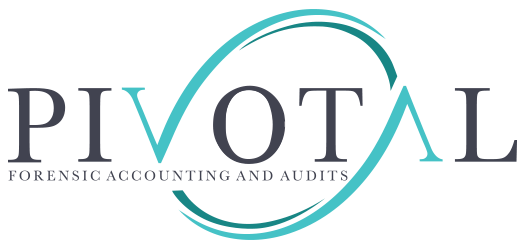Accounting,Bookkeeping,Business,Local Sales Tax,Management Accounting,Sales Tax Updates,Small Business,Tax Accounting,Tax Consultancy,Tax Preparation,Washington State
Year-End Sales Tax Reconciliation for Washington State Businesses
Year-End Sales Tax Reconciliation for Washington State Businesses
Pivotal Forensic Accounting & Audits — Year-End Sales Tax Guide
As the year wraps up, Washington State businesses face a critical task: closing out their sales-tax obligations accurately and preparing for next year’s changes. Even small errors in reporting or system configuration can lead to painful Department of Revenue (DOR) notices, penalties, or unnecessary audits.
Understanding Year-End Tax Rate Changes
Washington adjusts certain sales-tax components at the start of each year, including:
• State-level updates – While the statewide rate rarely changes, specific programs, transportation districts, and legislative adjustments may impact the combined tax rate in certain regions.
• Local rate adjustments – Cities, counties, and special purpose districts frequently change their rates effective January 1. These updates affect retailers, service providers, and remote sellers.
What businesses should do:
-
Verify next year’s published rates from the DOR’s January listings.
-
Confirm any rate changes apply to the location where the sale is sourced — especially important for businesses shipping goods or providing services in multiple jurisdictions.
-
Adjust internal tax matrices, POS rates, and invoicing templates before January 1.
Local Jurisdiction Updates: Small Changes With Big Impact
Washington’s local sales-tax landscape shifts regularly. Even a 0.1% increase in a transportation benefit district impacts compliance. Businesses should review:
• New district formations – Transportation, public safety, or cultural access districts may begin collecting tax.
• Boundary changes – Cities annexing new areas can shift tax responsibility.
• Temporary rate changes – Certain districts may adopt temporary increases for voter-approved projects.
The risk:
If your business charges the wrong local rate — even unintentionally — you remain responsible for the difference during reconciliation. Under-collecting means paying the shortage out of pocket.
Ensuring POS Systems and Accounting Software Are Updated
A missed update is one of the most common causes of over- or under-collection.
Key systems to review before January 1:
-
Point-of-sale (POS) systems
-
E-commerce platforms
-
Invoicing software
-
Custom checkout processes
-
Inventory management tools integrated with tax tables
Recommended actions:
-
Apply all available system updates in December.
-
Confirm that the software provider handles jurisdictional rate mapping — not all do.
-
Test sample transactions for each location where the business operates or ships.
Pro tip:
Clients with custom-built websites or older POS hardware should manually verify the tax table, as auto-updates may not apply.
Common DOR Audit Triggers to Avoid
Washington’s DOR conducts routine and targeted audits. The following patterns often trigger a deeper review:
1. Repeated under-reporting or late filings
Consistent lateness or discrepancies between reported sales and expected industry averages raise flags.
2. Large swings in reported taxable vs. nontaxable sales
If exempt sales suddenly spike, the DOR may want to verify documentation or exemption certificates.
3. Incorrect sourcing of sales
Washington uses destination-based sourcing for most transactions. Mistakes here commonly trigger audits — especially for businesses shipping goods throughout the state.
4. Unmatched sales figures compared to other reported data
The DOR can compare:
-
B&O filings
-
Marketplace facilitator reports
-
Third-party payment data
-
Industry benchmarking
If the numbers don’t line up, an audit may follow.
5. POS or system errors leading to incorrect tax collection
If the DOR receives complaints from customers or sees patterns in reported local-tax distributions, it may investigate.
Final Steps for Year-End Reconciliation
Before closing the books for 2025, businesses should:
✓ Run a full year-end tax liability report
✓ Compare collected vs. reported sales tax
✓ Verify exempt sales documentation
✓ Review adjustments and credits for accuracy
✓ Prepare January 2026 rate updates now
A clean reconciliation not only protects the business from errors — it helps prevent unnecessary audits in the coming year.
Pivotal Forensic Accounting & Audits — Here to Help
Year-end reconciliation and next-year tax transitions can be complex, especially for businesses with multiple locations, rapid growth, or outdated POS systems. If you’re unsure whether your setup is compliant or want a professional year-end review, we’re here to help.


